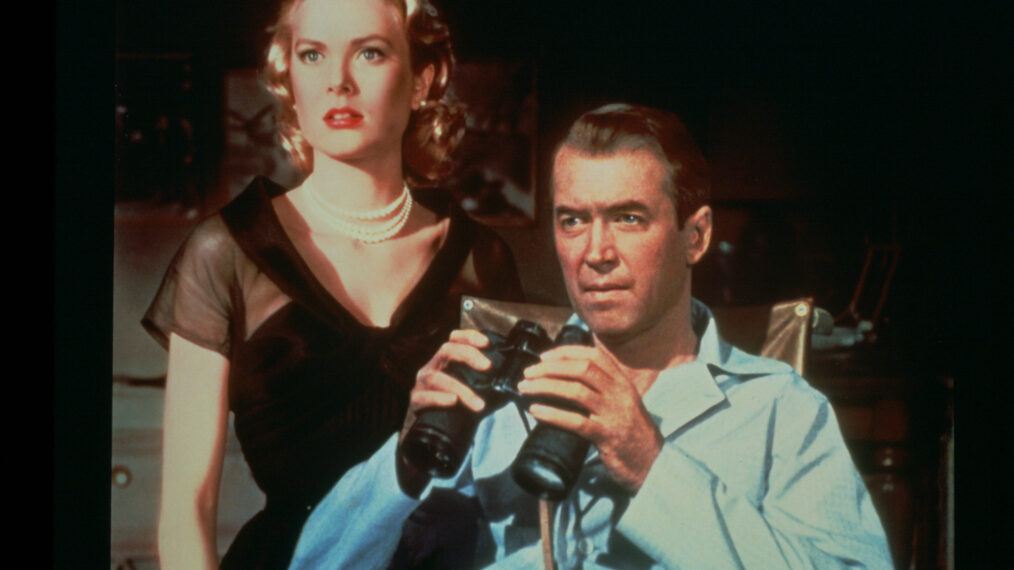The True Stories Behind Alfred Hitchcock’s ‘Rear Window’

On September 1, 1954, Alfred Hitchcock released Rear Window, his timeless tale of voyeurism and murder in a New York City apartment complex. From its top-tier performances by Grace Kelly and James Stewart to its stunning set design (an entire apartment block was built on a Paramount Studios soundstage), Rear Window is one of the best-known and most copied thrillers of the 20th century.
Most fans likely know that the film is based on the 1942 Cornell Woolrich short story “It Had to be Murder,” in which a man confined to his apartment by a broken leg begins to suspect that one of the neighbors across his apartment building’s courtyard has murdered his wife. But that story only provides the basic concept behind the film. For further inspiration, Hitchcock looked to two high-profile UK murder cases that occurred in his youth.
In the 1966 book Hitchcock, which consists of interviews with the director conducted by French filmmaker Francois Truffaut, Hitchcock notes that some of Rear Window‘s most memorable twists were inspired by two early 20th century murderers: Patrick Mahon and Dr. Hawley Harvey Crippen.

Grace Kelly and James Stewart in 1954’s Rear Window, one of 12 films airing during Kelly’s inaugural appearance in TCM’s Summer Under the Stars event
“In the Mahon case,” Hitchcock said, “the man killed a girl in a bungalow on the seafront of southern England. He cut up the body and threw it, piece by piece, out of a train window. But he didn’t know what to do with the head, and that’s where I got the idea of having them look for the victim’s head in Rear Window.” Mahon, a sporadically employed burglar, murdered his pregnant mistress, Emily Kaye, in 1924. But the details of his crime were not exactly as Hitchcock recalled; though Mahon discarded some body parts from a train window, others were incinerated in his fireplace. Mahon was captured by police after bloodied clothes he had stored in a suitcase were discovered in a train station; he was convicted and executed before the end of 1924.
The 1910 case of Dr. Hawley Harvey Crippen, an American doctor whose wife vanished while they were living in London, also stoked Hitchcock’s imagination. “When people noticed that [Crippen’s] wife had disappeared,” Hitchcock noted, “he gave the customary explanation: ‘She’s gone to California.’ But Crippen made a crucial blunder that turned out to be his undoing. He allowed his secretary to wear some of his wife’s jewelry, and this started the neighbors talking.” This, in turn, led police to investigate Crippen numerous times, with the fourth and final search revealing gruesome evidence that he had, in fact, murdered Mrs. Crippen, and hidden her body in his home.
Crippen’s foolish moves with his dead wife’s jewelry inspired Rear Window‘s reveal of Mrs. Thorwald’s wedding ring — a piece of evidence that allows Grace Kelly’s Lisa to confirm to James Stewart’s Jeff that Thorwald really did kill his wife. “If the wife really had gone on a trip,” Hitchcock said, “she’d have taken her wedding ring with her.”
Though it’s not documented if Woolrich was inspired by the Crippen case, he may have been. In his original short story, Thorwald disposed of his wife’s body the same way Crippen did: he hid it in a building’s cement flooring.

